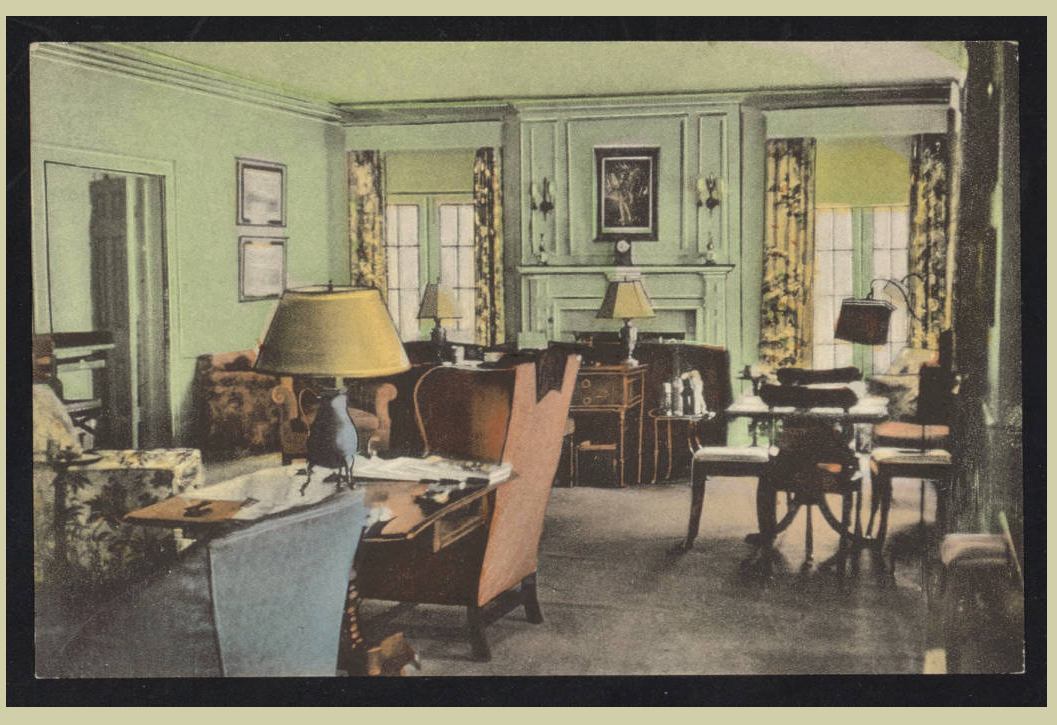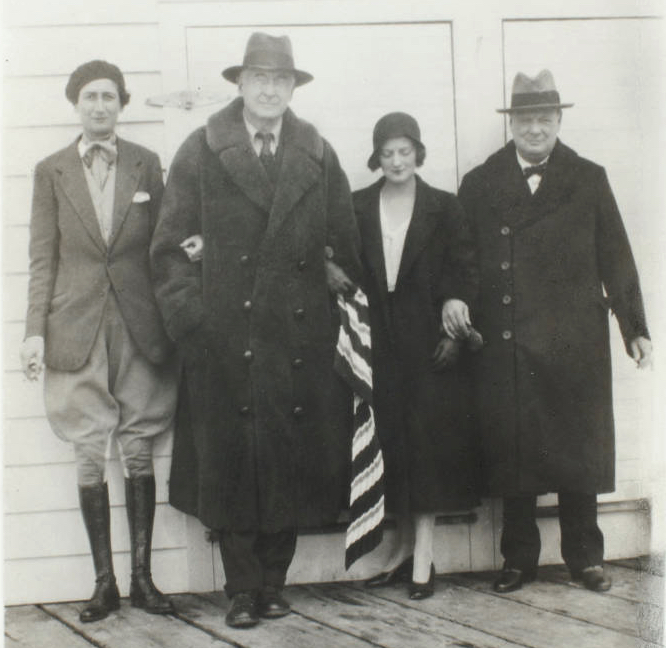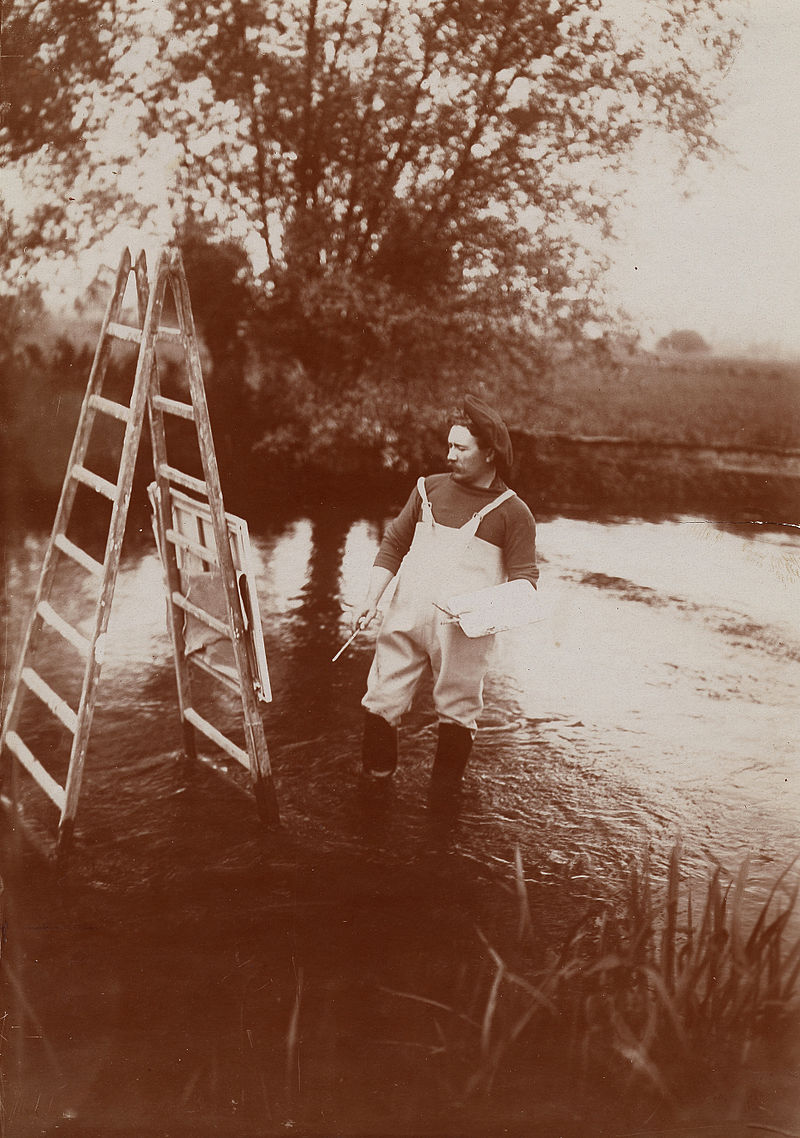When Bernard Baruch purchased Hobcaw Barony, the spot where this house now stands was occupied by a 10-room, two-story wooden structure built in 1900 by the Donaldson family. Friendfield House, known to the Baruchs affectionately as the Old Relick, burned on the evening of December 29, 1929. Baruch was at first reluctant to rebuild, but changed his mind under pressure from family and friends.
Determined that the new house would be fireproof, Baruch had it constructed of brick and steel, and surrounded by firehoses. The interior design is the work of Mrs. Raoul Fleishman of New York City, who later became part owner of The New Yorker. The rooms have been repainted in period colors, and this room looks much as it did during the Baruch era.

In the days before cars were plentiful and there was a bridge to Georgetown, guests of the Baruchs arrived at Hobcaw Barony by train and boat for a few days of hunting, fishing, going to the beach and generally experiencing the renowned Baruch hospitality. Baruch's biographer, Margaret L. Coit, describes his talent for making his guests feel at home:
All the graciousness of the South was in Baruch’s gift for making his guests feel that they could give him no greater pleasure that the privilege of entertaining them. He had all that was required to play host in the old tradition, One friend expressed the opinion of many when she pointed out that as soon as you entered Baruch’s house you felt that he had been born with the natural gift for hospitality...His warm human companionship gave much more than mere words of friendship could convey.
Coit, Mr. Baruch
Winston Churchill and Bernard Baruch met at the Paris Peace Conference after WWI and were close for many years. When Churchill stood to lose his fortune in the Wall St. crash of 1929, Baruch stepped in to loan him money. In Churchill’s words, Baruch was “my finest friend.” In this video clip, historian and Eleanor Roosevelt biographer Blanche Wiesen Cook offers further insight into their friendship.
Churchill was in New York City in December, 1931, on his way to visit Baruch, when he stepped out of a cab on 5th Avenue and was hit by a car. In January,1932, after a hospital stay, he traveled to Hobcaw Barony with his daughter, Diana, to continue his recuperation. The green overstuffed chair in the corner of the Hobcaw House living room is said to be his favorite spot. Some believe Churchill returned to Hobcaw during President Franklin D. Roosevelt’s visit in April, 1944, though that has not been confirmed.

Louis Aston Knight was a French-born American artist, son of Daniel Ridgway Knight, an American expatriate painter. Aston Knight, as he was known, was an award-winning artist who exhibited his paintings at the Paris Salon and at a gallery located near the Baruchs’ Fifth Avenue home in New York City.
In 1916 Bernard and Annie Baruch commissioned Knight to paint a number of Hobcaw landscapes and structures. In 1936 he returned to paint Hobcaw House, Bellefield Plantation and many other scenes. The seven oils and 27 watercolors in the Baruch collection comprise one of the largest privately-owned groups of Knight’s paintings. They have special meaning for the Belle W. Baruch Foundation because in several cases they represent structures that no longer exist.
